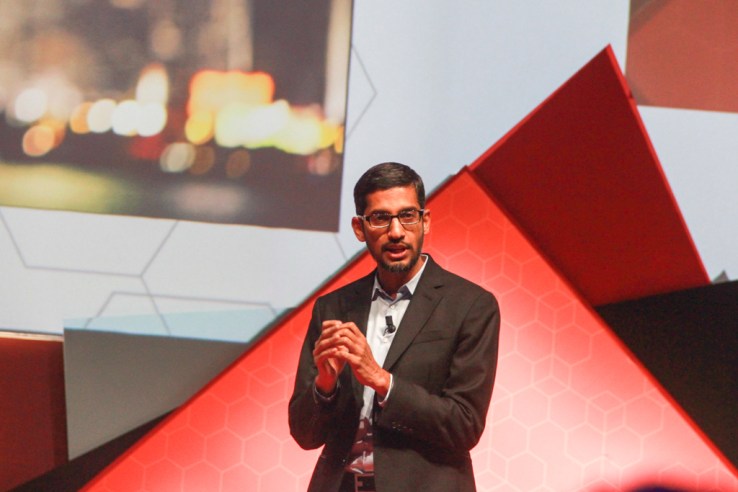
While Google continues to build out “cell towers in the sky” in the form of balloons and solar-powered airplanes, it’s also gearing up to launch an experimental mobile network in the U.S., too. Today, Google’s SVP of products, Sundar Pichai, said that we should start to see the results of the company’s MVNO mobile network effort in the “coming months” in the U.S., merging cell and WiFi networks in a “seamless” way.
The comments were made today at the Mobile World Congress in Barcelona, where Pichai was on stage for an interview where he described the company’s efforts in a bit more detail when asked about the company’s mobile network efforts and specifically the MVNO.
On the subject of a Google branded network in the form of an MVNO, Pichai referred to Android and how it has built that out.
“The core of Android and everything we do is to take an ecosystem approach and [a network would have] the same attributes. We have always tried to push the boundary with the innovations in hardware and software,” he sayd. “We want to experiment along those lines. We don’t intend to be a network operator at scale. We are actually working with carrier partners. Will announce something in the coming months.”
A report from last April noted that Google was speaking with Verizon Wireless for the service, although today Pichai did not mention any specific carriers or WiFi providers by name.
Does Google have a conviction to offer lower prices? interviewer Brad Stone asked. This is, after all, one of the biggest issues with mobile services for consumers: they are very expensive, and are ripe for disruption on this front. “It’s a bit different than this,” Pichai said. “We are thinking about how WiFi and cell networks work together and how to make that seamless.”
The company has also been working on building out fixed networks through Google Fibre. These too have seen limited rollouts in specific cities, and that could prove to be a model for how its mobile network might evolve.
Google’s efforts in mobile networks are, quite literally, coming out of thin air: the company has also been working on Project Loon and Titan (which came out of Google’s acquisition of Titan Aerospace), two projects that are respectively putting baloons and solar-powered planes into the sky to provide internet connectivity in remote areas and emerging markets. Pichai says that the company has now gotten its Loon balloons to work for six month stretches.
“Project Titan will take its first major steps in coming few months,” he said. project blink, loom and titan. “These are our access efforts to provide a backbone” to the world, he noted. “Cell towers in the sky.”

Comments
Post a Comment